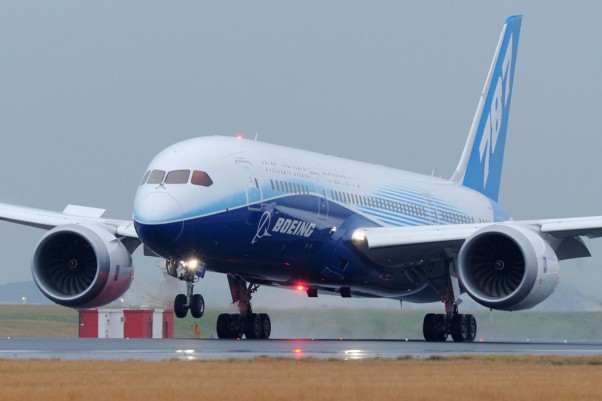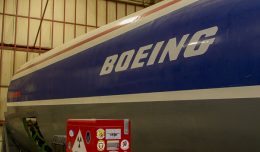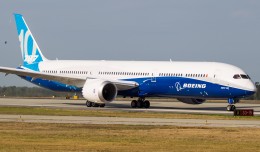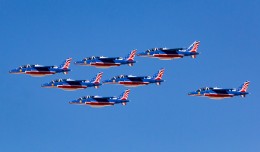The fleet in North America is expected to grow by nearly 2,200 aircraft to 8,800 airplanes over the next two decades, and aircraft manufacturers could sell more than 7,200 aircraft as less efficient planes are likely to be replaced with newer versions, Boeing said on Thursday.
The forecast shows single-aisle airplanes will account for the bulk of demand between 2011 and 2031. More than 900 new fuel-efficient single-aisle airplanes were ordered in 2011, and Boeing expects air carriers will require a total of 5,000 new single-aisle aircraft during the full period. Taking retirements of airplanes into account, this would raise the single-aisle fleet in North America from 3,730 last year to 6,090 in 2031.
“The North American commercial aviation market is about to record a third consecutive year of profit, with modest passenger traffic growth,” said Randy Tinseth, vice president of Marketing at Boeing Commercial Airplanes. “The long-term outlook for the North American airline industry is approximately 3 percent annual traffic growth through the forecast period.”
Tinseth said the North American market, projected to be worth some $820 billion during this period, is shaped by aggressive growth of low-cost carriers and the need to replace aging airplanes in the fleets of established network carriers. American Airlines, Delta Air Lines, and Southwest Airlines have all recently announced plans to replace some of their older aircraft with more fuel-efficient airplanes.
But the market for twin-aisle aircraft is also likely to see a significant expansion over the next two decades. Boeing expects the twin-aisle fleet in North America to expand from 1,030 twin-aisle aircraft last year to an estimated 1,740 twin-aisle aircraft in service by North American air carriers in 2031. This would give potential for aircraft manufacturers to sell up to 1,320 new aircraft.
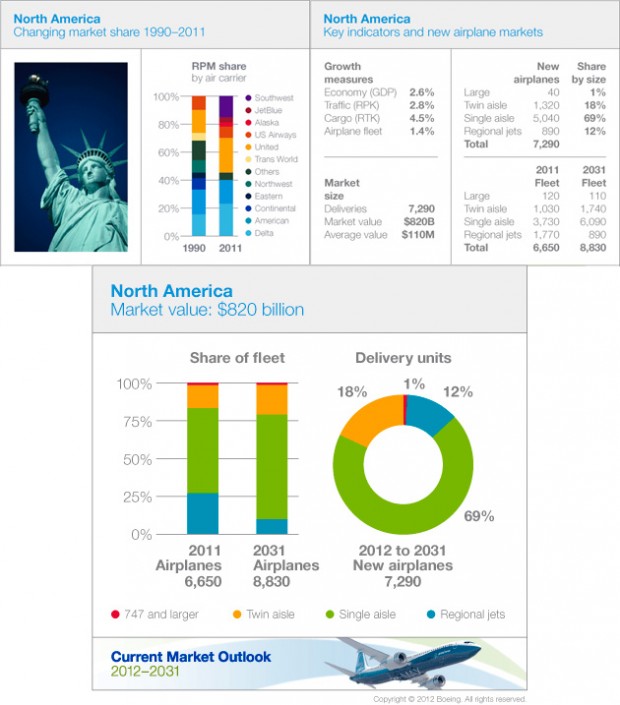
(Charts by Boeing)
Driven by anticipated passenger traffic to Southwest Asia, China, the Middle East, Africa and South America, long-haul international traffic to and from North America is forecast to grow at an annual rate of approximately 5 percent. Passenger traffic between North America and those regions is forecast grow at or above 6 percent per year.
Large airplanes such as the Boeing 747, however, are unlikely to see significant demand in North America over the next two decades. Boeing expects the fleet of large aircraft in North America will drop from 120 in 2011 to 110 in 2031. Taking the retirements of airplanes into account, the need for large aircraft in the region is unlikely to be more than 40 new planes.


